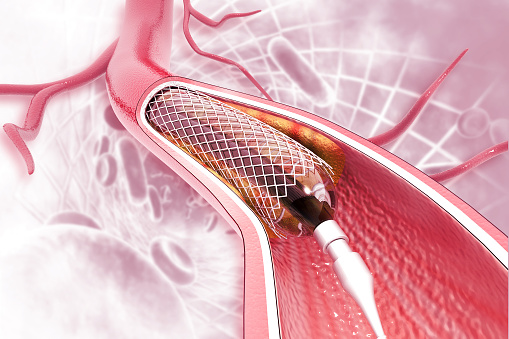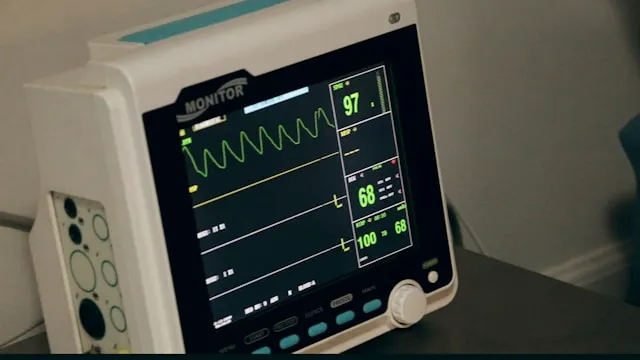Angioplasty is a Greek term that means vessel shaping. The procedure involves widening of clogged arteries (especially coronary arteries- the arteries surrounding the artery like a crown). A tiny balloon is placed on a guide wire, also called balloon catheter and is then inserted into the blocked artery to help widen it. The arteries can get narrowed or blocked primarily due to peripheral arterial disease, however, there can be other conditions as well.
Why is Angioplasty performed?

There are quite a few purposes of Angioplasty.
- The main purpose of Angioplasty is to widen narrowed arteries; otherwise, there will not be enough flow of blood in the heart, which will, in turn, create a shortage of oxygen.
- Angioplasty also reduces the risk of heart attack among patients having severely blocked or narrowed arteries.
- It relieves a person from chest pain that he/she tends to feel when the heart does not get its required supply of blood and oxygen.
Where does Angioplasty take place?
Angioplasty takes place in the Cardiac Catheterization la of the cardiology department of a hospital. The lab is like a specialized case room (It is a room with specific facilities that prevents the transfer of special cases from one hospital to another) that has advanced imaging technology.
How long does Angioplasty take?
Angioplasty does not take much time. It takes 1 hour at the most, however, the patient needs another 12 to 16 hours for recovery. The patient usually stays for a night in the hospital and goes home the following day.
What are different types of Angioplasty?
Based on the type of instruments used, Angioplasty can be divided into four types.
#1 Balloon Angioplasty
This type of Angioplasty involves the passage of a thin tube, or catheter, into a particular artery through an incision in the upper leg or arm. Then it is directed into the clogged artery. There is a balloon on the tip of the catheter that expands and pushes against the plaque in the wall of the artery to flatten it thereby widening the occluded artery.
#2 Laser Angioplasty
The procedures of balloon angioplasty and laser angioplasty are almost similar but in laser angioplasty, the catheter has a laser instead of a balloon on its tip. The laser tip gradually directs to the blocked artery and destroys the plaque layer wise. The laser basically vaporizes the plaque into gaseous particles. It is often used in combination with balloon angioplasty. In such a procedure, first the balloon attacks the hard plaque and then the laser is applied. Laser angioplasty is not performed by doctors very frequently.
#3 Atherectomy
In this procedure, a special instrument is pressed against the fatty deposits of the walls of the arteries instead of a balloon. The instrument basically cuts away the plaque. This procedure is mainly used to treat more calcified (hardened) blockages. The procedure can be divided into various categories:
Extraction Atherectomy
A tiny rotating blade is used in this procedure, which looks similar to a cutter on a food processor. The blade whisks away artery blockages at a rate of up to 1200 revolution per minute.
Rotational Atherectomy
A high-speed diamond-tipped drill is used for this procedure. The drill penetrates into the fatty deposits of the artery wall to remove the blockages and is chiefly used for awfully hard and calcified plaque.
Directional Atherectomy
A special type of instrument is used for this procedure, which is a combination of a balloon and a shaving blade. The shaving blade runs back and forth to have the deposits on the walls of the arteries away.
#4 Stenting
This is a process that is carried out to prevent the artery from closing again. Such a complication is called restenosis. Studies have shown that stents have improved the results of angioplasty greatly. A small metal device in inserted into the occluded artery through a catheter. The procedure is nowadays performed with balloon angioplasty. Direct coronary stenting can also be done but it is not practised frequently because patients having heart problems often develop blood clots as a result of this procedure.
How to prepare for Angioplasty?
Angioplasty is a step by step process. There are quite a few preparations that are required to be done.
The doctor performs a diagnostic test called coronary angiography before angioplasty. The other name for the procedure is cardiac catheterization.
In the procedure, a catheter is directed to the heart by threading it through the blood vessels. A special contrast dye is injected into the coronary artery that shows up in the X-ray images. This test is mainly performed to figure out the narrowed areas more specifically and determine the severity of the narrowing. The test result acts as a "road map" for the doctor to plan the best treatment strategy. Besides, the result also suggests how soon angioplasty needs to be done on the patient.
Precautionary measures
The patient is instructed not to eat anything after midnight till angioplasty is performed the next day.
The medications taken by the patient on the day of angioplasty should be under the strict supervision of a doctor.
Along with the given measures, dietary and lifestyle changes are also an essential and critical area where should be looked upon. This will not only decrease the probability of occurrence of angioplasty but also help in the recuperation process. Therefore, given are the - Indian Diet Changes after Angioplasty.How is the procedure performed?
- The patient is sedated with sedatives so that he/she can relax. Sometimes, a local anaesthesia is injected near the femoral artery, the one that leads to the coronary arteries.
- During the procedure, the interventional cardiologist makes a narrow incision in the artery and inserts a hollow catheter through it to direct it towards the occluded coronary artery. The cardiologist follows the catheter movement on a TV monitor through X-ray photography.
- The number and severity of the blockages determine the duration of angioplasty. The procedure generally doesn't take more than 2 hours.
What are the possible risks of Angioplasty?
Angioplasty does not have any serious complications as such. However, in certain cases, complications may crop up in spite of it being performed by a well trained professional.
- There can be a kind of discomfort in the catheter insertion site. Often bleeding also occurs.
- Careless insertion of catheter might lead to damage in blood vessels.
- The heart may start beating irregularly. Such a condition is called arrhythmia.
- In some rare cases (less than 3% of the total patients undergoing angioplasty) the artery instead of opening up close down. Such a condition calls for coronary artery bypass grafting.
- The dye used during the procedure may cause kidney damage.
- Patients may also suffer from a heart attack (3-5 % of people) or stroke (less than 1% of people). They can also experience mild chest pain if the balloon temporarily blocks blood supply to the heart.
- Instances of death as a result of angioplasty are unusual. Less than 2% of the patients undergoing angioplasty die during the procedure.
The risk of complications is higher among older people (above 65 years old), or among people who have chronic kidney diseases, heart diseases, or coronary artery blockages.
Research is going on to make the process safer and more efficacious.
Call +91-8010-994-994 and talk to Credi Medical Experts for FREE. Get assistance in choosing the right specialist, compare angioplasty treatment cost in India from various hospitals and get support in managing other hospital processes.
Reviewed by







